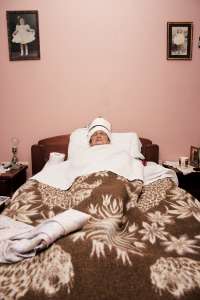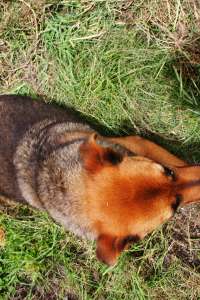Pablo David Rojas Mencias Kohlfurterstrasse 1, Berlin 10999 dadafoto@gmail.com
Project Name: вҖңГұaГұaвҖқ
This project couldnвҖҷt be finished due to the fact that вҖңГұaГұaвҖқ has passed away. In the native american language, quechua, вҖңГұaГұaвҖқ means sister. The use of these terms has stayed for several centuries after the Spanish colonization of South American and they are currently being used in a daily basis by most of the population in Ecuador.
My grandmother called her sister вҖңГұaГұaвҖқ since they were little girls. My mother probably heard the term from her mother and started to use it as well. Because of this, me, my sister and my cousins started to call our grand aunt вҖңГұaГұaвҖқ as well.
My grand aunt played a big role in my life. My both parents worked a lot and after school I went home and basically spent a lot of time with her. She taught me several things about life, culture and society. With the pass of time, she got older and began to have health issues. Most of them were related to falling accidents and dementia. However we always held a strong bond.
The вҖңГұaГұaвҖқ project aimed to experiment how photography can help family members to communicate with photography as a visual tool. Even though family members share time and space, the daily routine usually blinds them from important details about each other, their interests and passions. I asked my grand auntie to use my camera to portray the most important things in her daily life. Although she had a complete lack of photography skills, the images taken by her do provide valuable information about her values and interests. These images are accompanied by portraits of her taken by me, where a cleaner narrative can be seen regarding her health issues and daily life. The interaction between these photographs provides an insight to our relationship and family values.
Pablo David Rojas Mencias Kohlfurterstrasse 1, Berlin 10999 dadafoto@gmail.com
Project Name: вҖңГұaГұaвҖқ
This project couldnвҖҷt be finished due to the fact that вҖңГұaГұaвҖқ has passed away. In the native american language, quechua, вҖңГұaГұaвҖқ means sister. The use of these terms has stayed for several centuries after the Spanish colonization of South American and they are currently being used in a daily basis by most of the population in Ecuador.
My grandmother called her sister вҖңГұaГұaвҖқ since they were little girls. My mother probably heard the term from her mother and started to use it as well. Because of this, me, my sister and my cousins started to call our grand aunt вҖңГұaГұaвҖқ as well.
My grand aunt played a big role in my life. My both parents worked a lot and after school I went home and basically spent a lot of time with her. She taught me several things about life, culture and society. With the pass of time, she got older and began to have health issues. Most of them were related to falling accidents and dementia. However we always held a strong bond.
The вҖңГұaГұaвҖқ project aimed to experiment how photography can help family members to communicate with photography as a visual tool. Even though family members share time and space, the daily routine usually blinds them from important details about each other, their interests and passions. I asked my grand auntie to use my camera to portray the most important things in her daily life. Although she had a complete lack of photography skills, the images taken by her do provide valuable information about her values and interests. These images are accompanied by portraits of her taken by me, where a cleaner narrative can be seen regarding her health issues and daily life. The interaction between these photographs provides an insight to our relationship and family values.

